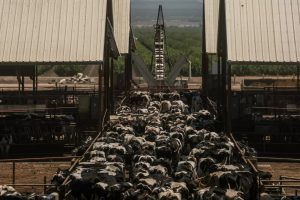
A recent measurement of total factor productivity – a ratio of the total amount of goods produced relative to all inputs – showed conventional farms are growing their output at a rate about four times greater than that of organic operations. For organic farms, the TFP grew at an annual rate of 0.66% from 2005 to 2016. Conventional farms experienced annual growth of 2.5% from 2000 to 2016, ERS said in a report.
“While weather-related feed factors reduced productivity for organic farms, they contributed to a productivity growth for conventional dairy farms,” ERS said. “Technical efficiency increased productivity slightly on organic farms, but reduced productivity on conventional farms, while scale-and-mix efficiency reduced productivity for both types of farms.”
Productivity growth also demonstrated variations according to geography. ERS noted the fastest-growing states were in the West and Southwest, with the slowest growth taking place in the South.
According to ERS, annual TFP growth in the U.S. ag sector was 0.97% from 2000 to 2016.

























